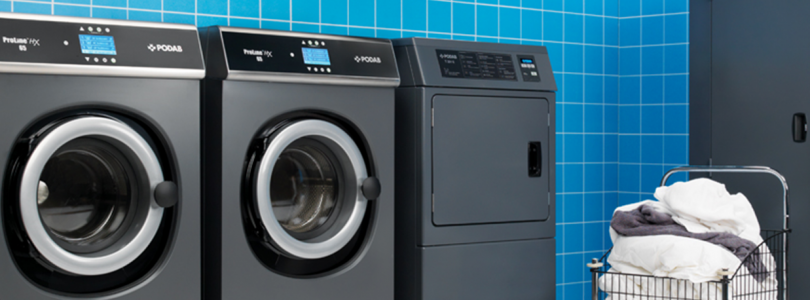Market and technical status report on heat driven appliances
Heat driven appliances is a technology with fully developed products that can use heat instead of electricity for warming up the process media. In this way cheaper and available heat energy from e.g. district heating, solar energy or industrial rest heat can be used instead of the more expensive electrical energy. It is an opportunity to reduce the energy costs, the environmental impact and to increase the use of district heating in areas where it otherwise would not be profitable.
The products are well tested and installed in several projects in Sweden already. Though there is a hesitant attitude on the market that prolong the timeline for a major breakthrough. There is still a limited number of installed products and only one major supplyer (ASKO/Cylinda) with both washing maschines, dishwashers and tumble dryers/drying cabinets. One other supplyer can as well adjust the appliances to be heat driven in one of their product series (PODAB).
The economy is one reason for the careful approach on the market. The heat driven appliances have been expensive to purchase, but today (May 2015) the price is only 15 % higher compared to a similar conventional maschine. Today in Sweden the electricty prices are low. This means that the difference between the price of heat and electricity is also small and the savings of operation costs are smaller than it would be with higher electricity prices. The electricity prices are expected to increase over time which would make heat driven appliances more profitable. Already today there are pay back calculations where the extra investments are payed back in less than five years for certain products, temperatures and system solutions. Life cycle cost calculations favour heat driven appliances both in a 10 and 30 year perspective with lower costs than for traditional electrical maschines.
There are some investments that have shown to be more profitable than others. It is recommended to go for solutions where the installations costs are as low as possible, i.e. short distances for new pipe installations, to keep down other extra equipment and working costs as well as applications with high usage and long operation times. Common laundries in connection to multiple family apartment buildings fulfill these requirements and here both washing maschines and tumble dryers are in use. Tumble dryers are probably the product that saves most electrical energy. Pree schools with a high usage of drying cabinets for wet clothes can also be a profitable investment. Besides there are projects in new areas where heat driven appliances are tested in individual homes. In new buidlings the extra installation costs can be kept down with smart solutions that are more difficult to achieve when renovating existing buildings.
There is a large potential and a huge market for heat driven appliances. There is need for more marketing and large supplyers that produce larger volumes which will reduce costs. There is need for discussions between property owners, building companies and energy companies in order to find the best solutions for the future. There are figures showing that appliances use 40 % of the energy in the household. Assume that heat driven appliances reduce electricity consumption with 50 % for the appliances. Multiply this with a large share of all households that can be connected to a heating source and this will lead to a huge reduction of the electricity consumption, costs, environmental impact and increase in use of heat.
Read the entire Deliverable 2.3 – Market and technical status report on heat driven appliances, dated 26th May 2015
Want to know more?
Deliverable no D.2.3 Market and technical status report on heat driven appliances, dated 26th May 2015
Please contact: Stefan Olsson, Energikontoret Sydost, stefan.olsson@energikontorsydost.se

